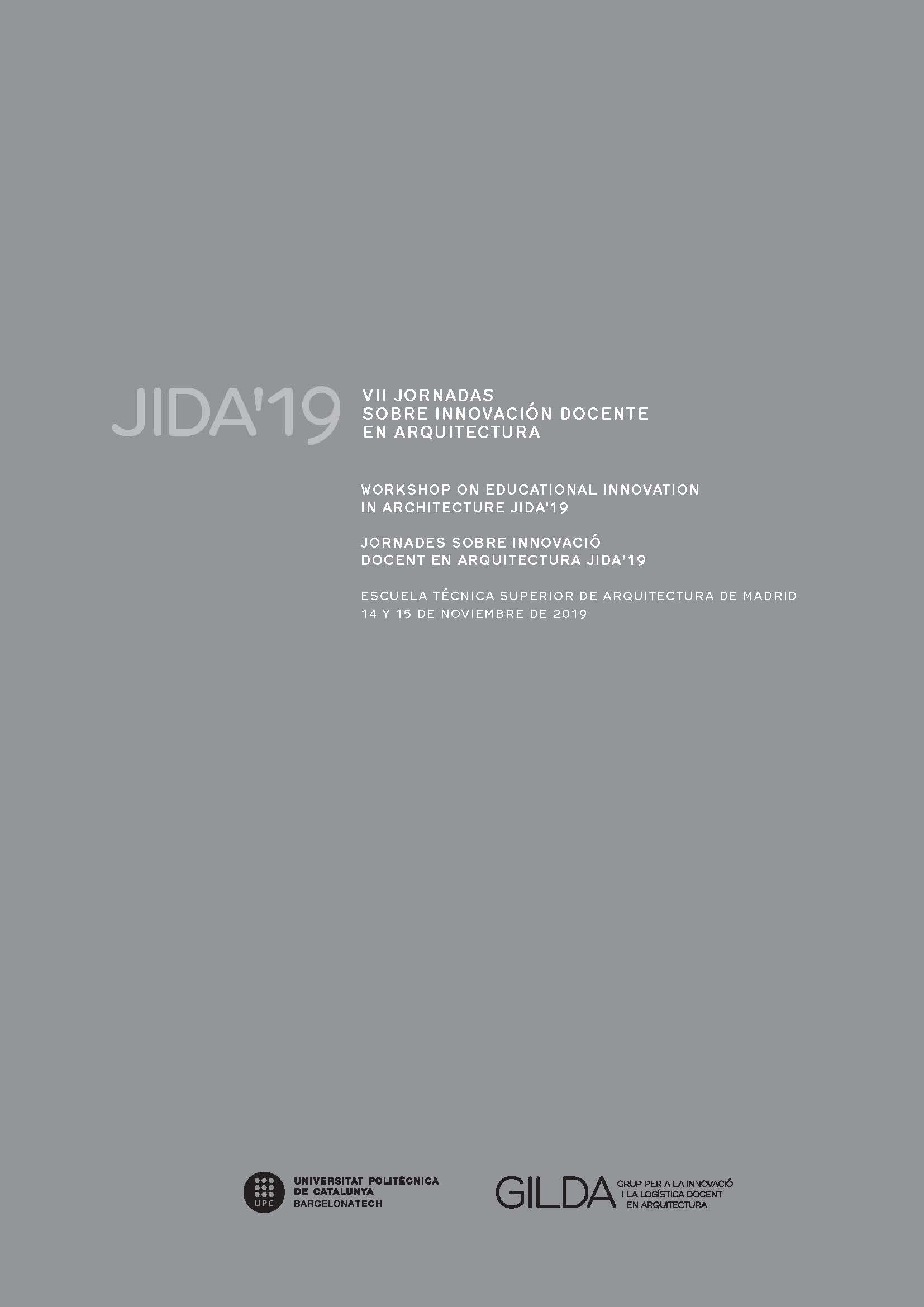El taller de arquitectura más allá del enfoque tradicional de Donald Schön
DOI:
https://doi.org/10.5821/jida.2019.8411Resumen
La enseñanza de la arquitectura no estuvo teorizada hasta los aportes hechos por Donald Schön en los años ’80, desde entonces sus ideas pedagógicas sobre teoría y práctica del aprendizaje han sido dominante en la formación de profesionales. Sin embargo, el modelo ha tenido durante la última década severas críticas especialmente por presentar al estudiante como un observador pasivo, más que un aprendiz activo. La presente propuesta indaga en los estilos de aprendizaje, como una forma de comprender los rasgos individuales que influyen en el aprendizaje de nuestros estudiantes y presenta una investigación acción conducente a una didáctica donde los estudiantes transitan en forma autónoma por el proceso proyectual. Estas didácticas que incorporan al cuerpo (kinestésicas) dirigidas a estudiantes con preferencias de estilo de aprendizaje activo y sensitivo, han sido una buena puerta de entrada a los conceptos y lenguaje que forman a un arquitecto. También, se ha revertido la tendencia que demostraba la dificultad del grupo activo en el desempeño de taller.
Citas
ARENTSEN, E. (2012). Aproximación a una didáctica integradora de los estilos de aprendizaje en el taller de arquitectura: diagnóstico y propuesta. Tesis MagÃster en Didáctica Proyectual. Universidad del BÃo-BÃo, Chile. <http://repobib.ubiobio.cl/jspui/handle/123456789/1472> [Consulta: 15 de julio de 2019]
CUFF, D. (1991). “Architectural Practiceâ€. Cambridge, MA: The MIT Press.
DEWEY, J. (1939). “Intelligence in the modern world, John Dewey’s philosophyâ€. USA: Random House.
DUTTON, T.A. (1987). Design and Studio Pedagogy, en Journal of Architectural Education (1984-), Vol. 41, No. 1., Autumn, p. 16-25.
FELDER, R.M. (2002). “Author’s preface“ -June 2002- Reprint of: Felder, R.M., & Silverman, L.K. (1988) Learning and teaching styles, en Engineering education, Engineering Education, 78(7), p. 674-681.
FELDER, R.M. y BRENT, R. (2005). Understanding student differences, en J. Eng. Educ., Vol. 94, No. 1, p. 57-72.
FELDER, RICHARD M. y SILVERMAN, LINDA K. (1988) Learning and Teaching Styles In Engineering Education, en Engineering Education, 78, 7, p. 674 -681.
FELDER, R.M. (1993). Reaching the second tier – Learning and teaching styles in college science education, en Journal of College Science Teaching, 78 (7), p. 674-681.
FELDER, R.M. (1996). Matters of style, en ASEE Prism, 6(4), p. 18-23.
FELDER, R.M. y SOLOMAN, B.A. Index of Learning Styles. <http://www.ncsu.edu/felderpublic/ILSpage.html>. [Consulta: 9 de noviembre de 2018]
KOLB, D.A. (1984). “Experiential Learningâ€, Englewood Cliffs, NJ: Prentice-Hall.
KOLB, D.A. y FRY, R. (1975). “Toward an applied theory of experiential learningâ€, en Cooper, Cary L. (Cary Lynn) Theories of group processes. London; New York: Wiley.
LA TORRE BLETRÃN, A. (2009). “La investigación acciónâ€, en Bisquerra Alzina R. (Coordinador) MetodologÃa de la Investigación Educativa. Madrid: La Muralla.
MEWBURN, I. (2011). Lost in translation: Reconsidering reflective practice and design studio pedagogy, en Art and Humanities in Higher Education, Vol.11, nº 4, p. 363-379.
OSSANDÓN, Y. y CASTILLO P. (2006). Propuesta para el Diseño de Objetos de Aprendizaje, en Revista Facultad de IngenierÃa - Univ. Tarapacá, vol. 14 Nº 1, p. 36-48.
SCHÖN, D. (1992). “La formación de profesionales reflexivosâ€. Barcelona: Paidos Ibérica, S.A.
WEBSTER, H. (2003). Facilitating critically reflective learning: excavating the role of the design tutor in architectural education, en Art, Design & Communication in Higher Education 2, no. 3, October, p. 101-111.
WEBSTER, H. (2008). Architectural Education after Schon: Cracks, blurs, boundaries and beyond, en Journal for Education in the Built Environment, Vol. 3, Issue 2, December, p. 63-74 (12).






















